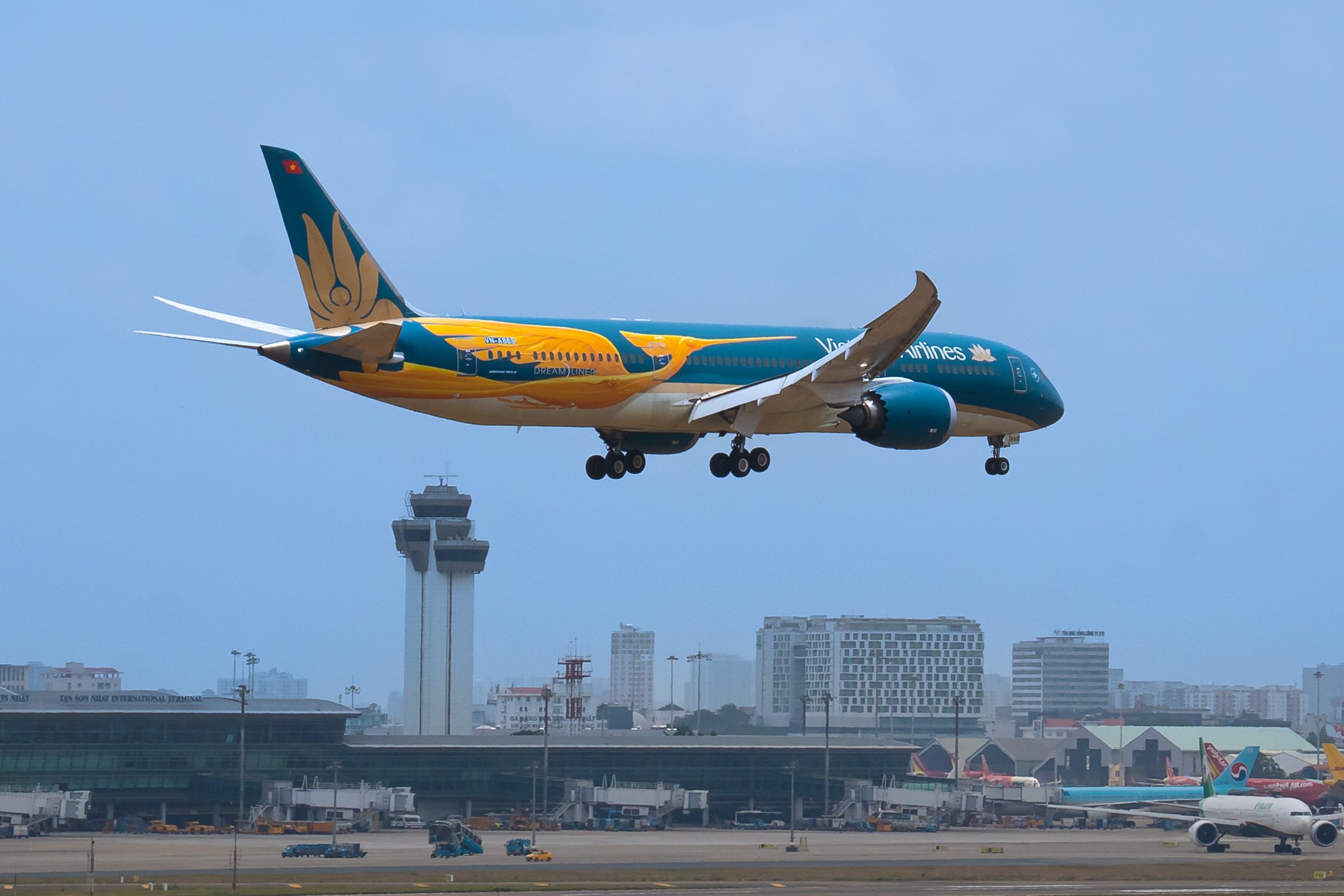In 2015, Vietnam Airlines successfully transitioned from a state-owned enterprise to a joint-stock company and listed on the stock market. However, after nearly 10 years of operating under this model, the national airline faced a financial crisis due to the impact of the Covid-19 pandemic. Vietnam Airlines experienced prolonged accumulated losses, negative equity, and short-term and overdue debts amounting to tens of thousands of billion Vietnamese dong.
In response, the airline implemented a comprehensive restructuring strategy encompassing assets, capital, organizational structure, and corporate governance.
 |
A Vietnam Airlines aircraft with the Lac bird symbol on its fuselage. Photo: Vietnam Airlines |
A Vietnam Airlines aircraft with the Lac bird symbol on its fuselage. Photo: Vietnam Airlines
In 2024, Vietnam Airlines achieved consolidated revenue of over 112,000 billion VND and a consolidated after-tax profit of nearly 8,000 billion VND. Passenger traffic almost fully recovered, reaching 22.75 million passengers.
"These figures reflect the results of a comprehensive and decisive restructuring process," a representative of the airline said.
According to the airline's leadership, the focus of the restructuring process was streamlining and modernizing the organizational structure. Vietnam Airlines reviewed functions and tasks, eliminated overlaps, merged redundant units, and reduced unnecessary intermediary levels. From 2021 to the present, the corporation has reduced 50 department-level units and four group-level units, while subsidiaries have also cut dozens of units, saving billions of Vietnamese dong in costs.
The corporation also reshaped its management structure to empower employees according to regulations on decentralization and delegation of authority, ensuring clear responsibilities for all tasks. Additionally, the airline has vigorously applied technology to operations by deploying systems such as the MRO-IT system, the PSS, and a series of digitalization systems to increase work efficiency.
The airline proactively coordinated resources and reallocated pilots, flight attendants, and engineers based on the actual needs of each fleet. Concurrently, the internal training system continues to maintain international standards, with 171,000 trainees in 2024, including over 114,000 trained in IOSA subjects.
A sound financial strategy, focusing on capital structure optimization and debt management, enabled the airline to negotiate a reduction and deferral of 45,000 billion VND, over half of which was aircraft leasing costs.
This year, with an additional capital increase of 9,000 billion VND, Vietnam Airlines' equity is expected to return to a positive level. "This plan marks a significant turning point in restoring a healthy financial state and ensuring sustainable listing on the stock market," said an airline executive.
With a network of 58 international and 38 domestic routes, the airline not only ensures aviation security and connects regional economies but also contributes to enhancing Vietnam's position on the global aviation map.
According to a company representative, these restructuring efforts demonstrate the airline's ability to operate efficiently as a joint-stock company and its effective application of digital technology in management and operations.
In the future, the airline will continue to optimize its fleet, expand its international network, implement key investment projects at Long Thanh Airport, and strengthen digital transformation.
Yen Chi












